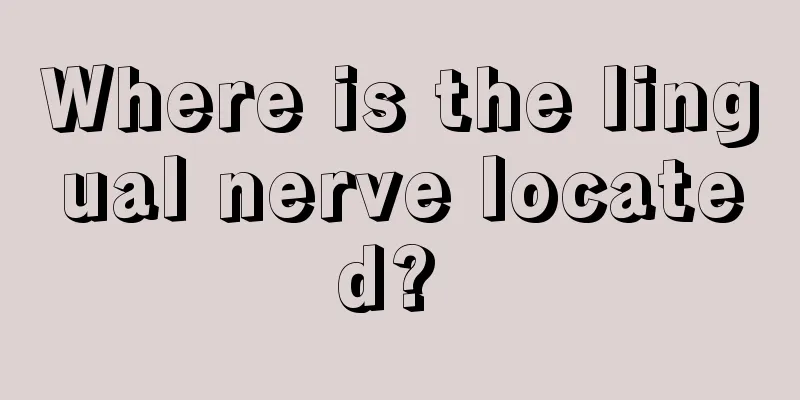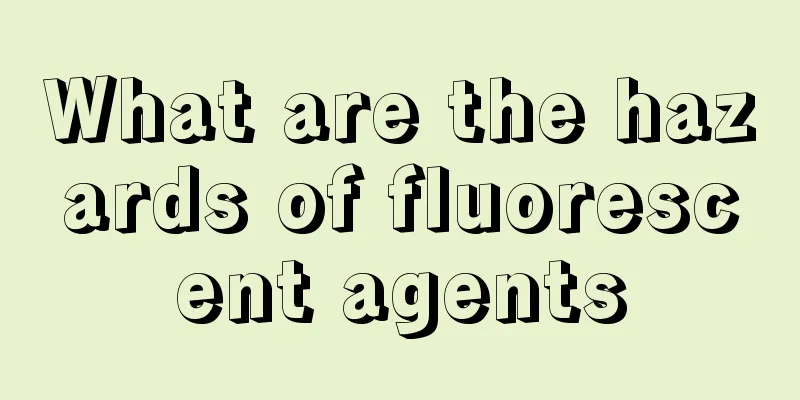Where is the lingual nerve located?

|
The human tongue is a very sensitive part of the body. Even with eyes closed, people can feel what the tongue touches. The tongue is especially sensitive to taste. The reason for this is that there are many nerves distributed on the tongue. Some diseases can cause problems with the tongue nerves, which can affect the patient's sense of taste. So where are the tongue nerves distributed? Lingual nerve distribution: It is a branch of the mandibular nerve. The lingual nerve is a sensory nerve that is located in front of the inferior alveolar nerve and arcs downward along the outside of the hyoglossus muscle to the tip of the tongue. It is distributed in the mucosa of the anterior 2/3 of the tongue and receives general sensation from the mucosa. The taste fibers from the chorda tympani also pass through this nerve to the fungiform papillae and receive taste from the anterior 2/3 of the tongue. Mandibular nerve One of the three major divisions of the trigeminal nerve. It is a mixed nerve that exits the cranial cavity through the foramen lacerum (horses and pigs) or the foramen ovale (cattle and carnivores) and divides into the masseteric nerve, medial pterygoid nerve, lateral pterygoid nerve, mylohyoid nerve, deep temporal nerve, buccal nerve, auriculotemporal nerve, lingual nerve and mandibular alveolar nerve. The first five are motor nerves, distributed in the muscles of mastication (pterygoid, masseter, temporalis, mylohyoid and digastric muscles); the last four are sensory nerves, distributed in the cheek skin, mucosa and glands, lower lip and chin, mandibular teeth, gums and alveoli, tongue and lingual mucosa. Mandibular dental surgery can be performed by anesthetizing the mandibular alveolar nerve at the mandibular foramen on the inside of the mandible. It is a mixed nerve that passes through the oval foramen. There are two roots, large and small. The larger one is the sensory root, which starts from the lower corner of the semilunar ganglion. The smaller one is the motor root, which passes through the oval foramen below the semilunar ganglion and then merges with the sensory root. After the two nerves merge, they give rise to the spinous foramen nerve and the medial pterygoid nerve. The spinous foramen nerve enters the skull through the spinous foramen and is distributed to the dura mater, and the medial pterygoid nerve is distributed to the medial pterygoid muscle. Then it is divided into two parts, front and back. (1) Anterior segment: smaller, mainly motor nerves, running deep to the lateral pterygoid muscle, giving rise to the masseter nerve, deep temporal nerve, lateral pterygoid nerve, and buccal nerve. ① The masseter nerve passes through the upper edge of the lateral pterygoid muscle, through the mandibular notch between the temporalis muscle and the mandibular joint, and is distributed in the masseter muscle and mandibular joint. ② The deep temporal nerve passes through the upper edge of the lateral pterygoid muscle and enters the deep surface of the temporalis muscle and is distributed to the muscle. ③ The lateral pterygoid nerve originates from the anterior femoral or buccal nerve and is distributed deep to the lateral pterygoid muscle. ④ The buccal nerve, also known as the long buccal nerve, is a sensory nerve that passes between the two heads of the lateral pterygoid muscles, goes down along the anterior edge of the mandibular ramus on the inner side of the coracoid process, penetrates the buccal fat pad deep to the anterior edge of the temporalis muscle and masseter muscle, and connects with the branches of the facial nerve on the outer side of the buccal muscle to form the buccal plexus, which is distributed in the buccal mucosa, skin, buccal gingiva, periosteum and nearby mucosa in the mandibular molar area. (2) Posterior nerve: Larger, mostly sensory nerves, with branches including the auriculotemporal nerve, lingual nerve, and inferior alveolar nerve . ① Auriculotemporal nerve: It has two nerves, between which the middle meningeal artery passes. It runs backwards deep to the lateral pterygoid muscle to the inner side of the mandibular neck, turns upward, and sends out several branches between the auricle and the mandibular condyle to the mandibular joint and parotid gland. After leaving the parotid gland, it goes upward through the root of the zygomatic arch and sends out several branches to the temporal region and communicate with the facial nerve. ② Lingual nerve: It is initially located under the lateral pterygoid muscle, where it receives the chorda tympani of the facial nerve and conducts the parasympathetic secretory fibers of the facial nerve into the submandibular ganglion, from which several branches are sent to the submandibular gland and sublingual gland. The lingual nerve then goes down, in front of the inferior alveolar nerve, deep to the lateral pterygoid muscle, to between the medial pterygoid muscle and the mandibular branch, and then goes down between the mylohyoid muscle and the styloglossus muscle and the hyoglossus muscle to enter the sublingual area. Along the way, branches are sent to the ipsilateral sublingual mucosa, sublingual gland, mandibular lingual gums and the mucosa of the anterior two-thirds of the tongue. ③ The inferior alveolar nerve passes deep to the lateral pterygoid muscle, between the sphenomandibular ligament and the mandibular branch, to the mandibular foramen and enters the mandibular canal. The mylohyoid muscle branch arises just before it enters the mandibular foramen and is distributed to the mylohyoid muscle and the anterior belly of the digastric muscle. After the nerve enters the foramen, it sends branches along the way to the mandibular molars, premolars, and incisors. When it reaches the mental foramen, it branches out to become the mental nerve, which is located under the deltoid muscle. Its several branches are distributed in the labial and buccal gums, lower lip mucosa and skin in front of the first premolar, and connect with the contralateral nerve of the same name in the midline. There are two parasympathetic ganglia connected to the mandibular nerve, the otic ganglion and the submandibular ganglion. The auricle is flat and oval, located slightly below the oval foramen of the sphenoid bone. It is connected to the medial pterygoid branch of the mandibular nerve through several short fibers, and to the glossopharyngeal nerve and facial nerve through the superficial petrosal nerve. The submandibular segment is small and fusiform, located between the hyoglossus muscle and the mylohyoid muscle, above the deep surface of the submandibular gland and below the lingual nerve. It is connected to the lingual nerve and the chorda tympani of the facial nerve by two anterior and posterior fibers, and sends out several branches that are distributed to the oral mucosa, submandibular gland and its duct, sublingual gland and tongue. |
<<: Is the pulp the tooth nerve?
>>: Where are the aortas in the human body?
Recommend
How to treat spinal diseases quickly and self-effectively?
The spine is a very important bone tissue, becaus...
What are the disadvantages of having too much muscle?
Muscles are the most important tissues in the bod...
8 signs that liver cancer is approaching you!
Liver cancer is one of the most common malignant ...
Knowing the symptoms of brain cancer early can reduce pain
Nowadays, people will shudder when they hear abou...
How to treat a ruptured eardrum?
The ear is a complex whole consisting of multiple...
Kidney cancer staging diagnosis method
Most patients with kidney cancer think that their...
What to do if your voice is hoarse
With the society's advocacy of an environment...
Experts analyze the causes of nasopharyngeal carcinoma
Nasopharyngeal cancer has a serious impact on pat...
What are the functions of medical protective masks
The so-called medical protective masks are often ...
Analysis of the cause of endometrial cancer
Cancer experts at the Oncology Hospital pointed o...
Is blood type hereditary?
In fact, everyone's blood type is related to ...
Early symptoms of endometrial cancer in pregnant women
In our lives, perhaps we often hear some gynecolo...
How should thrombosis be treated?
The so-called embolism refers to the blood coagul...
The most obvious symptoms of spinal dislocation
The spine is the most important bone in our entir...
The efficacy and function of wormwood wine
Many people have heard of mugwort, which has a wi...









